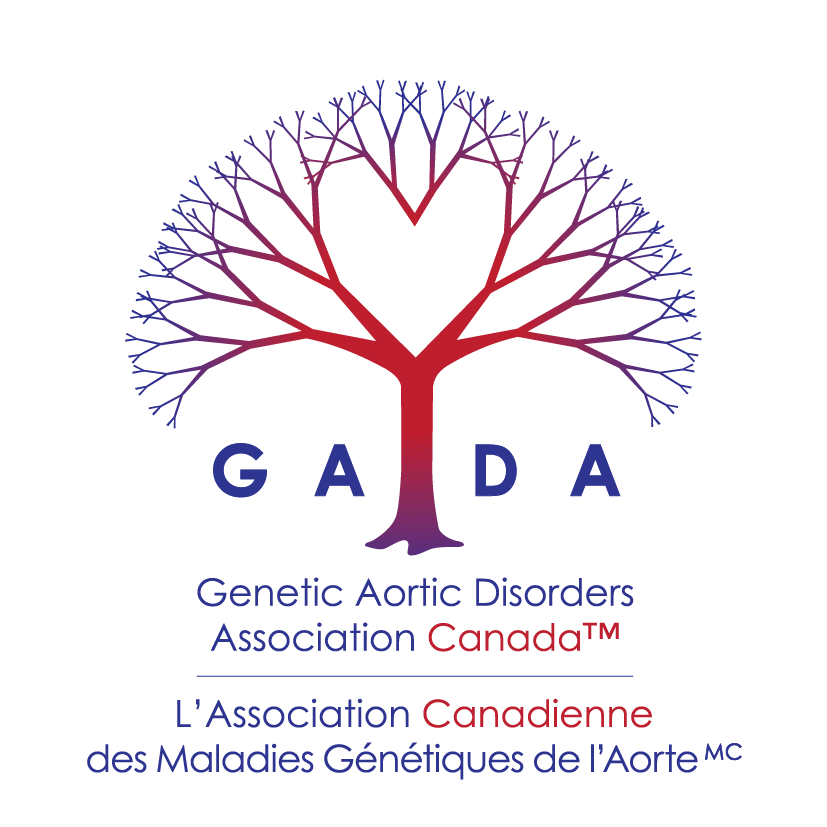Connections Help Build A Stronger Community
~Written in 2018 by Nicole Pleten
Mother’s intuition is a powerful thing. It can sometimes sense things a scientific mind may not make sense of right away. This is the story of my 7-year-old daughter Hanna, and her diagnosis and journey with Marfan syndrome.
Hanna had been diagnosed with a Congenital Cystic Malformation of the lung (CCAM) at my 20 week anatomy scan. She arrived healthy, strong, and with no breathing issues. She did, however, have the longest baby feet I have ever seen. I gasped when I saw them and so did many others.
She continued to do well. She was growing and gaining weight, but she was never a chubby baby. Her height and weight were not proportional making her look long and lean, and while the pediatrician kept reassuring me that she was doing well, I never gave up on my suspicion that something was amiss.
I immediately found information on Marfan syndrome and related disorders. At her 8 month check-up I arrived with a list of concerns that worried me besides her physical features; with her putting books and toys very close to her face, how she refused to put any weight at all on her legs, the fact that she wasn’t crawling, and her difficulty with the pincer grasp. At the end of that appointment she referred Hannah to Sick Kids pediatric genetics. I was finally going to get an answer.
I left the first genetics appointment more confused than when I had arrived. They had asked a lot of questions and taken measurements of Hanna, but they made no mention of connective tissue disorders or what could possibly be going on. They were going to set up appointments for Hanna to see ophthalmology and to have an echocardiogram done. So even though I didn’t have an answer, Hanna’s eyes, heart and aorta would be checked, and that made me feel a lot better.
We played the waiting game and eventually saw both ophthalmology and cardiology. She was under 2 years old at this point and having her sit for an extensive eye exam was difficult. The best the doctor could determine was that her vision was indeed very bad. But she would need an exam under anesthesia to determine just how bad.
Things started to move more quickly after the echocardiogram had determined that her aorta was enlarged. We found out just before she turned 2 that she did indeed have Marfan syndrome. She tested positive for the FBN1 gene mutation, a spontaneous mutation. And while having a child with a rare disorder is never something a parent would wish for themselves or any other parent, I was so relieved that we now had an answer and could proceed.
It took us a while to figure out how to access all the services Hanna would need. I often feel like this journey has been like a giant puzzle that we are slowly piecing together. Our original ophthalmologist did not refer us to CNIB or any blind/low vision services. She also wasn’t moving very quickly on getting Hanna the correct prescription.
We eventually were able to get proper blind/low vision services as well as an OT and PT to come and visit Hanna. Through the blind/low vision consultant we were connected with an amazing optometrist that knew exactly how to help Hanna. She convinced us that Hanna would need to wear contacts and glasses. We tried our best to get her to wear contacts at age 3. She was pretty resistant to them – as any 3 year old would be – and we vowed to try again after some time had passed.
After making a connection with other marfan parents, they encouraged me to keep trying and gave me all their best tips. I don’t know if they realize it or not, but I took their advice to heart and Hanna would end up wearing contacts and glasses at the beginning of junior kindergarten. It was a huge step for her and her vision improved dramatically.
Hanna’s transition to junior kindergarten was seamless thanks to her wonderful OT, PT, and blind/low vision consultant. Hanna is one determined little girl. Her motivation and perseverance serve her very well. In addition to her personality, Hanna has been extremely lucky to have had such wonderful teachers that have listened to my concerns and helped Hanna achieve anything she sets her mind to!
The resources provided by GADA Canada and the Marfan Foundation in the U.S. have been extremely helpful. I have benefited greatly from the patient and family conferences both organizations have held in Canada and the U.S. These conferences have allowed me to learn about the latest research and ask the experts my questions. I have always left feeling hopeful and excited for Hanna’s future. These organizations have also allowed me to connect with other parents and people living with connected tissue disorders. I find these connections priceless as I try and navigate Hanna’s appointments and any issues that arise.
Just as Hanna and I discuss her worries and concerns about her diagnosis, I also benefit from speaking to others and that is one of the main reasons that I have been helping to organize a peer support network in the greater Toronto area. We support people living with genetic aortic disorders and their family members by meeting quarterly throughout the year in an accessible location in downtown Toronto. If you would like more information about this group, please contact friendsofgadagta@gmail.com or check out our Facebook group: Friends of GADA GTA
